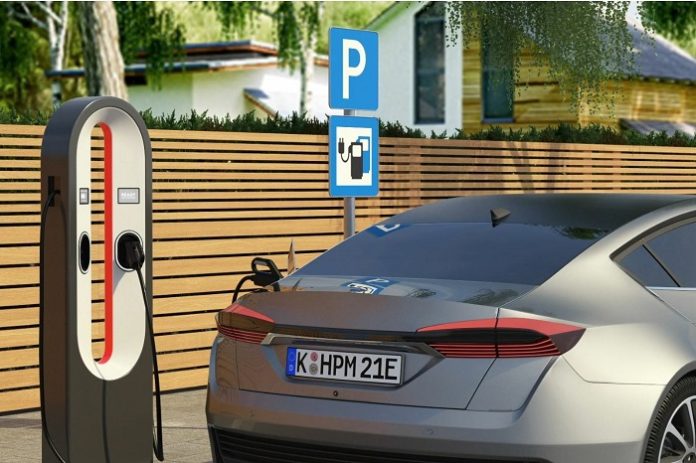Innovative battery cooling systems and high-performance cooling fluids enable fast charging times, greater safety and higher performance.
The ongoing evolution in battery management
Electric cars are on the rise, with their share of all new car registrations increasing again in 2021. With good reason: the cars are quieter, easier to drive, cheaper to maintain and more environmentally friendly.
However, one major concern about electric cars has still not been dispelled. When the battery is empty, it takes too long to recharge it. Appeals to common sense to take a half-hour break after 400 kilometers and recharge during that time are of no use. If you own a car, you want it to always be available.
For greater acceptance, e-cars need to charge faster than they do today. A new generation of thermal management in the battery could be the solution to the problem. Highly specialized coolants are decisive for this.
But why does charging actually take so long? And how can the charging time be shortened?
LANXESS E-Mobility
LANXESS offers a broad product portfolio for e-mobility. From specialty chemicals for battery materials to high-performance plastics, cooling fluids and flame retardants for battery systems and components of the electric powertrain – comprehensive innovations from a single source.
The battery must stay cool
Even today, fast-charging stations can deliver up to 300 KW of electricity. That provides enough energy for 300 kilometers in 10 charging minutes. But there is a problem: Practically no e-car available today can be charged at this rate. The thermal management of the battery is simply not designed for this. “The strong current flow would heat up batteries to a point at which the internal heat becomes detrimental to its stability, causing e.g. the electrolyte to degrade, resulting in an irreversible capacity loss,” explains Raphael Schmitz, battery expert at LANXESS. A key to greater acceptance of e-cars therefore lies in better battery cooling, he adds,
“The strong current flow would heat up batteries to a point where the internal heat becomes detrimental to its stability, causing e.g., the electrolyte to degrade, resulting in an irreversible capacity loss.”
One key to greater acceptance of e-cars: better battery cooling
But how do you cool down a battery? The simplest, cheapest – and most ineffective – method is air cooling. While driving, the airstream helps dissipate the heat. But when charging, the car stands still. The heat can only be dissipated slowly. Fast charging is not feasible with this method.
That’s why most manufacturers today rely on indirect cooling. Here, the coolant circulates in pipes around the battery cells to dissipate the heat. The cooling pipes cool the cells where they touch them. But not in places they don’t touch. The effect of this technology is therefore limited.
A completely new approach is therefore needed to achieve shorter charging times than is usual today: More and more experts are bringing so-called immersion cooling into play. In this process, the battery is completely immersed in cooling liquid. In other words, it is cooled directly. This allows the coolant to absorb much more heat in a short time than with previous cooling approaches.
Next-generation coolant
“For immersion cooling, the cooling fluid used must deliver significantly more than it has in the past.”
David Stonecipher, Global Head of Application Technology for LANXESS’ Lubricant Additives business unit
The idea is obvious. Its implementation, on the other hand, is a challenge for the chemical industry as well. “For immersion cooling, the coolant used must perform much differently and better than before,” explains David Stonecipher. He oversees the development team working on new coolants at LANXESS’s technical centers in Naugatuck, USA and Mannheim, Germany. Since these flow directly around the battery cells, they must not conduct electricity. He points out that the fluids should not react with the various metals, plastics or rubbers that surround them. And they must be able to flow well, no matter the temperature inside the battery pack.
All these properties add to the requirements of high flame retardancy, high heat capacity and environmental compatibility. Clearly, immersion cooling is a real challenge for coolant manufacturers.
What matters in coolants:
Shorter charging times with LANXESS products
Product developers in LANXESS’ Lubricant Additives business unit have further developed the existing product range in light of the technological developments.
- Polyalphaolefins (PAO): These exceptionally pure, synthetic hydrocarbon liquids hardly react with surrounding materials and have both good thermal and electrical properties.
- Polyol esters (POE): Based on LANXESS’s high-purity Hatcol ester liquid technology, they have very good thermal and electrical properties as well as high fire resistance.
- Phosphate esters (PE): Based on our fire-resistant Reolube hydraulic fluids, they provide ultimate fire and burn protection in the event of accidental damage or electrical failure.
The vision is that in the future it will take hardly any longer to charge an e-car than to refuel an internal combustion car. But it will take a while before that becomes reality. Immersion cooling is currently still under development by the automotive industry. For example, the battery pack must be designed differently for it to work. While some limited examples of immersion cooling are showing up in the market today, it is expected to become commonly used in light-duty passenger vehicles over the next 3-5 years.








